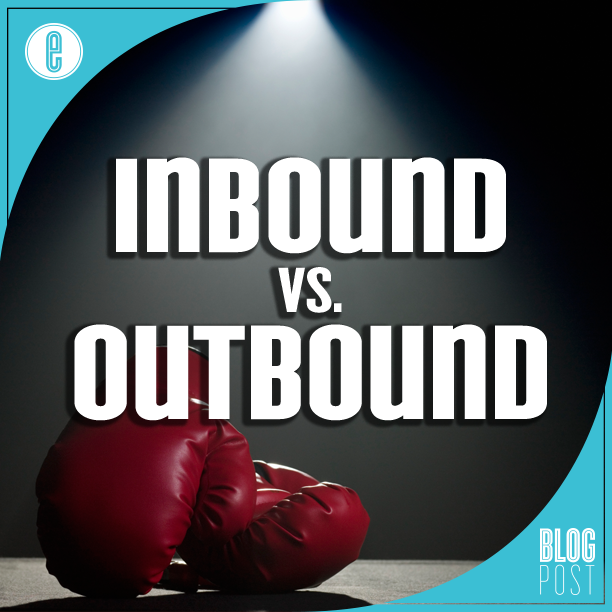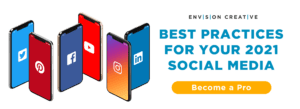
Inbound Marketing vs. Outbound Marketing
As a marketer, you may have noticed a lot of colleagues referring to “the usual” marketing approaches (such as newspaper, radio, and television ads) as “outbound marketing.” “Outbound” has found its place among our vocabulary because of the ever-growing popularity of “inbound,” a methodology born from a surplus of digital marketing best practices. Let’s take a look at how inbound and outbound marketing differ.
A Brief Overview of Inbound and Outbound Marketing
Outbound Marketing
Outbound marketing can be considered “traditional” marketing – whether physical or digital – where organizations use vehicles such as print media, radio, television, telephone, or email to disrupt the marketplace with mass amounts of advertisements and promotions. Outbound marketing is a numbers game. And, as evidenced from their long-time existence, outbound tactics absolutely work, but with high costs and difficulty in tracking return on investment (ROI).
Inbound Marketing
Inbound marketing, on the other hand, thrives within one specific medium: the Internet. Inbound marketing leverages reliance on Internet search engines and social media to gradually introduce relevant content into the marketplace. Prospective customers organically discover the brand, and then are nurtured through email, social media, and a targeted content, until they are both customers and loving brand promoters. This approach helps companies become authorities in their fields, build trust with clients, and generate web traffic and potential sales leads.
[Inbound marketing is NOT content marketing.]
Measuring ROI
Outbound Marketing
It is inherently difficult to track the ROI of an outbound marketing initiative. Although a fluctuation in sales may be attributed to the 4,000 direct mail newsletters your company sent out the week before, there is no absolute means of differentiating the sources or explaining the indirect influences behind each sale — at least before the company CEO cuts you off.
Inbound Marketing
Being purely digital, inbound marketing initiatives are paired with real-time analytics and tracking software. A savvy marketer will know how well each and every element of a campaign performs, allowing them to not only give credit where credit is due, but also more efficiently pinpoint the campaign’s strengths and weaknesses.
The primary goal of inbound marketing (and any marketing, for that matter) is to generate sales leads. When using outbound tactics, you’re unlikely to know where leads are coming from, which ad was effective, or how to accurately measure your return on investment.
Cost Comparison
Outbound Marketing
As one might expect from the broadness of outbound marketing, costs are variable and depend on how, where, and when you push your messages out to the marketplace. No matter the outlet however, there are costs, whether for production, impressions, real estate, or time on screen. And a brand must invest in mass quantity if they are to make a significant impact.
A company can easily spend tens of thousands of dollars each year for outbound marketing without any measurable results.
Inbound Marketing
In essence, inbound marketing is free. It is about dispersing relevant, useful information that your target audience will actually want to read.
“Feel-good mumbo jumbo” aside, an inbound marketer is investing time, not money. And to save time, a business that fully and efficiently uses inbound marketing may need to invest in the following:
1) Software for marketing automation, website analytics, social media publishing, email marketing, or database/customer relationship management (CRM).
While not necessary, software makes life easier for everyone. The good news is that there are (mostly) free alternatives available for each of the mentioned services. The better news is that most inbound marketing software, like HubSpot or Spokal, provides all of these services and much more in a single, scarily affordable package.
2) A means of efficiently creating high-quality content and inbound strategies.
For the perfectionist, inbound marketing involves juggling many hats (a writer, a social media manager, a designer, an analyst, a strategist, etc.). Some businesses may decide to fill in the gaps of expertise with employees. Alternatively, they may choose to hire an inbound marketing agency (like us!) that acts as an extension of their brand – an entire team of specialists and professionals for a fraction of the cost of a full-time employee.
In respect to content creation, a business may also consider crowd-sourcing their writing through a reputable website, such as Zerys or Freelancer.
Final Words
The digital age has changed the consumer’s way of gathering information. According to statistics published by HubSpot, via the Interconnected world, 61% of global internet users research products online. This percentage will inevitably grow.
While inbound marketing has a significant advantage in respect to cost and trackable ROI, it can be extremely time consuming. We believe that the most effective campaigns utilize a healthy mix of both inbound and outbound tactics; neither marketing approach must exist exclusively. However, as technology slowly but surely eliminates the effectiveness of cold calls and commercials, meeting prospective customers at a personal level will grow increasingly important.

Envision Creative Group is an inbound marketing agency in Austin, Texas. In addition to digital marketing, we specialize in website design and development.
-FINAL(01-00)-White&Blue-01.svg)



